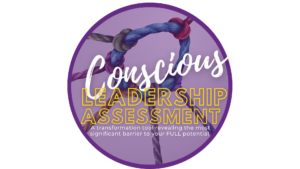In a world where consumers are more than just buyers—they’re believers in causes, stories, and change—the idea of “empowering the beneficiary through engagement” isn’t just a lofty concept; it’s a strategic revolution. It’s the kind of move that turns heads, opens wallets, and, most importantly, creates real change. If your goal is to grow your business and uplift the very people you serve, then this is your playbook.
In this post (click the link to jump down):
The Missing Link in Modern Business
Often, businesses view beneficiaries as the passive receivers of aid, but what if we flipped the script? The traditional top-down model overlooks a critical resource: the beneficiaries themselves. By engaging those you aim to help in your business operations, you can unlock untapped potential, drive innovation, and foster a sense of ownership that elevates your mission from charity to partnership.
Consideration 1: Understanding the Beneficiary
Before you can empower, you need to understand. This means diving deep into the community you’re serving and learning the nuances of their needs, skills, and aspirations. It’s not enough to assume; you must engage, listen, and adapt your business to fit into the fabric of their lives.
Insight: The Power of Listening
True empowerment starts with a conversation. By listening to the beneficiaries, businesses can discover what they need and what they can offer. This exchange of ideas can lead to innovative products and services that resonate on a deeper level with the market.
Consideration 2: Co-Creation to Empower the Beneficiary

Empowerment is a two-way street. Co-creation involves beneficiaries in developing products or services, leading to solutions that are not just for them but by them. It’s a partnership that respects and utilizes the knowledge and expertise of those you aim to assist.
Insight: Shared Ownership Drives Engagement
When beneficiaries are part of the creation process, they become invested in the product or service’s success. This shared ownership means they’re more likely to advocate for and support the business, creating a loyal customer base built on mutual respect and purpose.

Listen/watch/read the interview with Shiela Freemantle about how she founded Tintsaba and its impact on hundreds of women in eSwanti.
Consideration 3: Measuring Impact Beyond Profit
To truly engage beneficiaries, businesses must measure success in more than just sales. Impact metrics should reflect the positive changes in the lives of those you work with, which in turn can drive a more profound brand connection with the broader consumer base.
Insight: Impact Drives Loyalty
Customers today want to know that their purchases make a difference. By showcasing the real impact on beneficiaries, businesses can create a compelling narrative that drives customer loyalty and attracts new patrons who share your values.
Building Bridges, Not Just Businesses
To engage beneficiaries effectively, entrepreneurs must build more than just a business—they must build bridges. This involves integrating beneficiaries into every aspect of the business, from ideation to delivery.
Creating a Collaborative Ecosystem: The Heartbeat of Social Impact
In the journey to empower the beneficiary through engagement, the cornerstone of any forward-thinking business is establishing a collaborative ecosystem. This isn’t a buzzword; it’s a fundamental shift in how businesses interact with their stakeholders. It’s about fostering an environment where feedback is encouraged and acted upon, where learning is shared, and growth is achieved collectively.

Listen/watch/read the interview with Erin Houston, CEO and co-founder of Wearwell in the United States. Learn how Erin collaborates with international suppliers and her team to engage the beneficiary.
Embrace Feedback Loops for Continuous Beneficiary Engagement
A feedback loop is essential for understanding the impact of your services or products on the community. This goes beyond collecting testimonials; it involves creating structured systems for ongoing dialogue. Tools like SurveyMonkey or Google Forms can be used to gather insights, while forums like Town Hall meetings provide a space for live, interactive discussion. These platforms allow entrepreneurs to glean valuable insights directly from beneficiaries, ensuring that the services offered are not just needed but are continuously refined to better serve the community.

Listen/watch/read the interview with Philippa Reiss Thorne, the previous Managing Director of Gone Rural, eSwatini, about how she incorporates feedback from the beneficiary.
Leverage Shared Platforms for Idea Exchange
Collaboration thrives on shared knowledge, and there are ample opportunities for exchange in today’s digital world. Create or join online platforms like Slack communities or LinkedIn groups where entrepreneurs and beneficiaries can exchange ideas. Such platforms can break down barriers, allowing for a free flow of innovation that can lead to the development of new products or the improvement of existing ones.
Inclusive Decision-Making Processes
Inclusivity in decision-making processes reinforces the beneficiaries’ sense of ownership over the social initiatives. It’s crucial to create avenues for beneficiaries to contribute to decision-making. This can be achieved through advisory boards, including beneficiary representatives, or regular stakeholder meetings where decisions are openly discussed. Platforms like Loomio help facilitate inclusive decision-making by providing a space for collective discussion and decision-making.
Fostering a Culture of Shared Learning to Empower the Beneficiary
Knowledge is a powerful tool for empowerment. By fostering an environment where beneficiaries and businesses can learn from each other, you’re not just building a product; you’re building capacity. Initiatives like Skillshare or Coursera for Business OR engaging YouMeWe Social Impact Group {link} to enhance culture, influential communication development, employing conscious leadership strategies and tactics …. It will set a robust foundation for growth. Such shared learning experiences can increase the beneficiaries’ ability to sustain themselves and contribute meaningfully to the business.
True empowerment comes from growth—not just of the business but of the individuals and communities it serves. When beneficiaries are engaged as partners, their growth translates directly into the business’s success. Collaborative growth can be supported by partnerships with local education institutions or through mentorship programs that connect beneficiaries with industry experts. This element is so important. Let’s dive a little further.
Training and Capacity Building: Elevating Skills, Amplifying Impact
When we talk about empowering the beneficiary through engagement, we talk about investing in human potential. Training and capacity building are not just about imparting skills; they’re about unlocking the latent potential within communities to create a workforce that can contribute meaningfully to the local economy and your business.
Investing in Human Potential for Sustained Growth
The first step towards transformative training is identifying the skill gaps hindering beneficiaries from becoming active contributors to your business and their communities. Use tools like LinkedIn Learning to assess and provide necessary skills training. This investment in human capital is an investment in the sustainable growth of your business.
Creating Tailored Training Programs
Design training programs that are not one-size-fits-all but tailored to the unique needs of your beneficiaries. Partnerships with organizations like YouMeWe Social Impact Group (yes, my company) to provide customizable educational resources that cater to diverse learning needs and schedules, ensuring that everyone has the opportunity to learn and grow. Conscious Leadership development and Persuasive Presentation Skills are some of the many areas in which we work with clients.
Skill-Building Workshops That Empower
Hands-on skill-building workshops can empower beneficiaries to apply new skills directly to work opportunities within your business. Platforms like Eventbrite allow you to organize and promote workshops ranging from practical trade skills to digital literacy, ensuring your beneficiaries have the tools they need to succeed.
Leveraging Educational Initiatives for Long-Term Impact
Consider creating scholarship programs or partnering with educational institutions to offer formal education opportunities. Initiatives like Coursera’s Social Impact Partnerships provide access to a wide range of courses, helping beneficiaries gain accredited skills that can open doors to new possibilities.
Measuring the Impact of Training and Development
It’s crucial to track the progress and impact of your training initiatives. Use platforms like Google Analytics to monitor your online training programs’ engagement and success rates. This data can help you refine your approach and demonstrate the tangible impact of your investment to stakeholders and investors.
Incorporating these elements into your business strategy ensures that empowering the beneficiary through engagement is more than a tagline—it’s a tangible, actionable reality. By building the capacity of your beneficiaries, you’re enhancing their livelihoods and fortifying your business’s foundation for long-term success.
Closing thoughts: The Symbiosis of Engagement and Empowerment]
By embedding these practices into the fabric of your business, you not only empower the beneficiary through engagement, but you also sow the seeds for a resilient and adaptive business model. This collaborative ecosystem isn’t just about doing good; it’s about doing well by creating a symbiotic relationship where everyone prospers.
Empowering the beneficiary through engagement is more than just a benevolent act; it’s a strategic model that fosters business growth, innovation, and sustainability. It’s about creating a symbiotic relationship where both parties grow together, united by a shared goal and mutual benefit.
Make Your Contribution Count Now
Start now by opening a dialogue with your beneficiary community. Schedule a meeting, send out a survey, or visit in person. Make the first step toward true engagement, and watch as the seeds you plant today grow into the foundations of a better tomorrow for your business and those it serves.
 Let’s do this!
Let’s do this!
I’m Suzanne F. Stevens, and at YouMeWe Social Impact Group, we grow Conscious leaders, their businesses, and sustainable social impact.
As part of our commitment to this mission, I invite you to complete a Conscious Leadership Assessment–to understand your conscious and unconscious barriers to reaching your full leadership potential.
The best part is that it reveals the biggest barrier to reaching your FULL POTENTIAL—a $297 value with YouMeWe compliments. Visit https://youmewe.ca/conscious-leadership-assessment/ to gain access to this accurate transformation tool. Use Promo Code: CLAssessment2023.
The article was originally posted by %author_name% Originally posted on%post_title%
. This article originally posted on Source